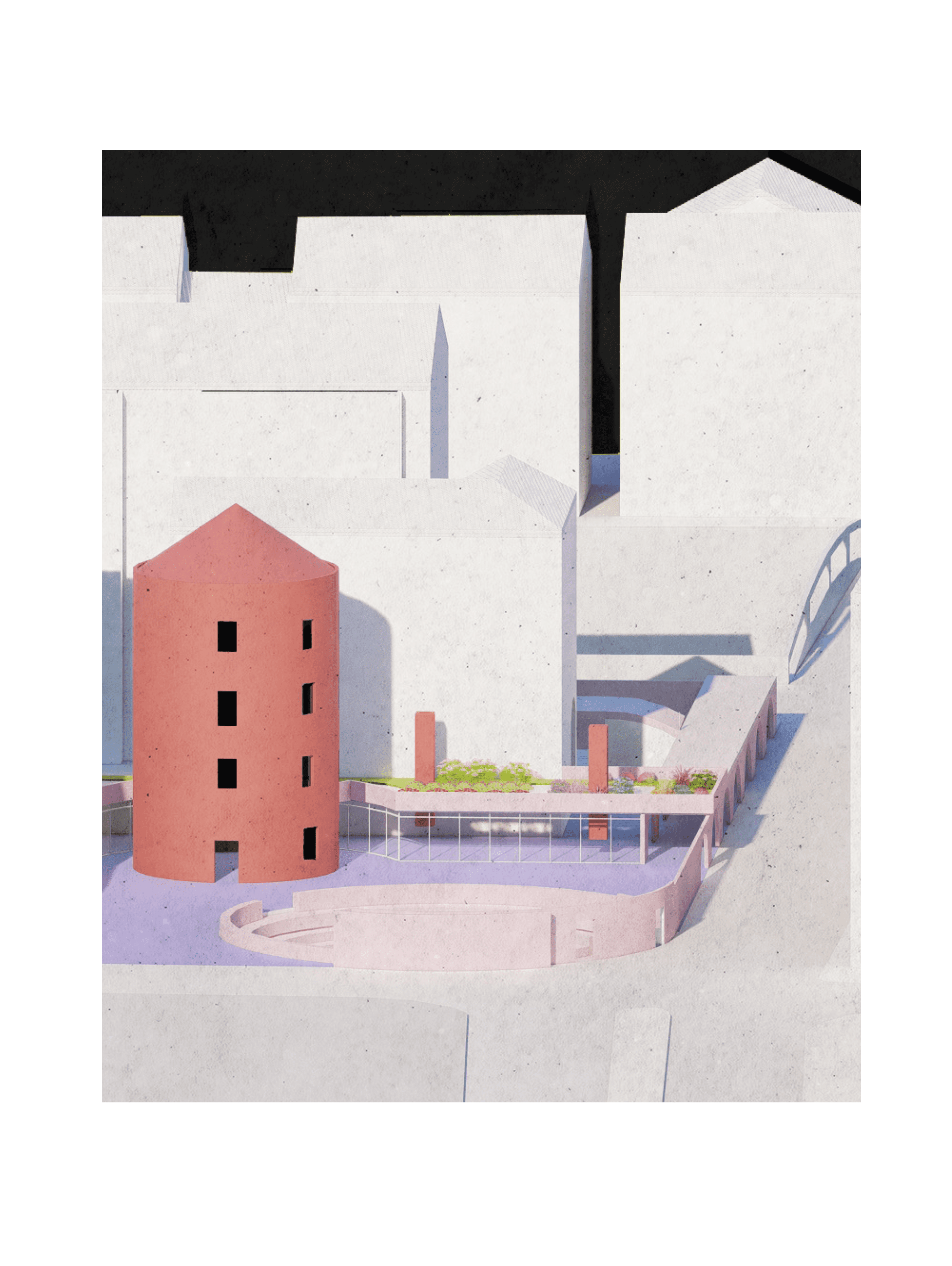The study looked at the making of civic spaces through the imagination of figurative architectural objects within an empty site facing the Liffey, in Usher’s Island. An amphitheater, a library, and a communal kitchen are placed on the lot and a pedestrian route is reimagined, drawing people within the site and away from the trafficked Bridgefoot Street. The use of figurative and platonic forms of architecture allowed me to not dwell on the typology of the new but rather to focus on how the new buildings acted upon the ground and to imagine how civic life would materialize around them.
Through the process, a hypothesis was formed: an attention to the design of the void space, not merely as the negative of self-referential buildings, but as a building matter that alternates with the built form creating relations and plots, can actively connect the new architecture to the urban tissue that contains it, and prepare it for the unforeseeable metamorphosis that it holds. In this sense, the design of the in-between spaces can become a tool for active open-endedness, and allow the city to be expandable within itself. To be a careful designer of new architectural objects is essential, but to be aware of what they do to the forever-changing city around them is imperative.
